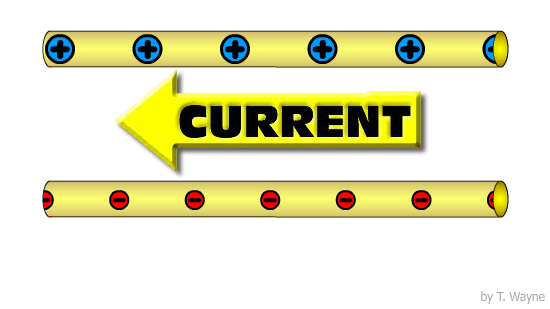The term, "current," is use to describe the intensity of the charge flow. Below is an animation showing the current as it flows in a pair of wires.
-in-a-shorter-wire.gif)
Because physics describes the relationship between space, matter, time and energy, physicists describe the current as an energy flow from high energy to low energy. On a battery, or any power source, this flow is from the positive terminal to the negative terminal. This means that positive charges must be used to describe the direction of the current because positive charges are repelled from the positive terminal.
However, engineers, are focused on metal wires. What makes a metal different from other materials is the sea of available electrons. These free electrons, not positive charges, are the charges moved by the electric field. Because of this, engineers define current as the flow of negative charge. This means that when a physics student talks with an engineer about current, they must remember that the current directions are reversed. When modeling the flow of charges it does not matter if the you consider the flow of positive or negative charges. The analysis will work either way. However, physicists define current as the flow of positive charge.
Current is defined by the variable "I." (That's a capital letter "eye".) I stands for the phrase "intensity of flow." This phrase was used in some of the first publications about current. Current is defined how quickly charge flows. Charge is represent by the letter "Q" and time by "t." The current is mathematically modeled by

Note how the current is depicted as the flow of positive charges.
|